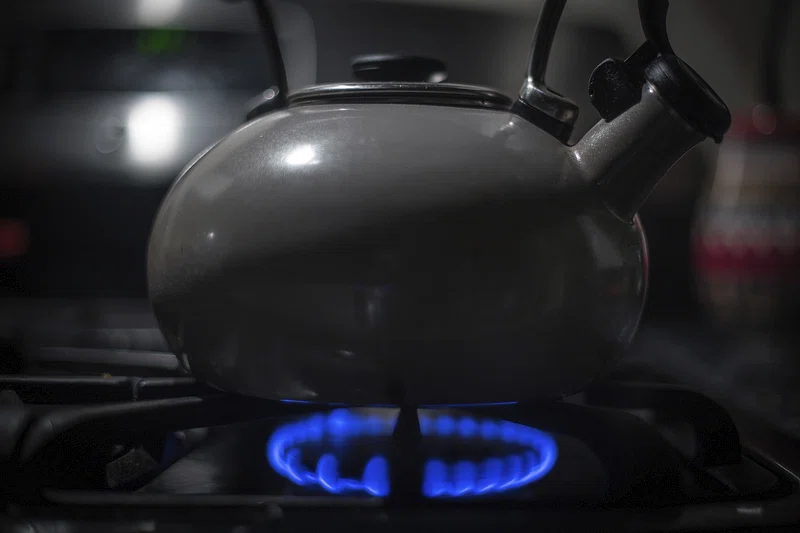Increasingly, we are finding that gas stoves are not only bad for the climate but also for our health. The gas industry has known for decades about the negative impacts of their products but prioritized profits over people every time. Late in 2022 a study was published showing that gas stoves can be attributed to almost 13% of all US childhood asthma cases. This revelation shocked the public and ignited the “gas stove wars”.


How gas utilities used tobacco tactics to avoid gas stove regulations
After evidence emerged in the 70s about the health effects of indoor nitrogen dioxide exposure from gas stove use, the American Gas Association launched a campaign designed to manufacture doubt about the existing science.

Study finds that Gas and Propane Combustion from Stoves Emits Benzene and Increases Indoor Air Pollution
A critical study has found that gas stoves emit significant amounts of benzene, a known carcinogen. Using a single gas hob for 45 minutes raised the levels this pollutant to levels to above that found in secondhand smoke. It was also found benzene migrats throughout houses- in some cases raising concentrations above chronic health benchmarks for hours after stove use.
In December 2023, coalition member Beyond Toxics released the study Fumes in Focus based on testing from 17 different homes in Eugene and Springfield showing the health effects of gas stoves in homes. The resulting footage visualized the pollution caused by these appliances & highlighted the limitations of vent hoods . This was a follow up study to a shorter project conducted in April 2023- Read it here.
Beyond Toxics used an industry-standard optical gas imaging camera alongside a personal air quality monitor in homes ranging in size and age to determine levels of toxic gasses accumulating in kitchens while gas stoves were in use. Some key findings included:
- 82% (14/17) of homes had chronically hazardous levels of nitrogen dioxide presenting a risk for vulnerable populations (children, elderly, people with existing respiratory conditions)88% (15/17) of homes experienced increases in nitrogen dioxide associated with asthma symptoms for children. 12/17 saw increases in nitrogen dioxide associated with asthma symptoms for people of all ages.
- Nitrogen dioxide and volatile organic compounds, a class of chemicals that are often harmful to people, produced by gas stoves spread throughout homes including dining rooms, ground floor rooms, and upper floors.
- 94% (16/17) of the ventilation hoods in this study failed to capture all pollution from gas stove burners and ovens.
- Weekly - Out of Gas: The University of Oregon’s methane-powered boiler system needs to go, climate activists and local politicians say
- Daily Emerald - University and local organizations “Rally to Electrify UO”
- Oregon Capital Chronicle - Transition to clean energy in Oregon homes will prevail, despite fossil fuel industry’s tactics
- KEZI - Local students lead strike to demand climate emergency action
- KLCC- Eugene natural gas ban removed from upcoming ballot
- KLCC - The Eugene Gas Ban: The Hottest Issue in Town
- Bloomberg - An Oregon City Banned Natural Gas. The Gas Company Fought Back
- Washington Post - A fight brewing in Oregon could decide how we heat our homes and cook
- KCBY 11 - 'YES for Eugene' climate policy campaign launches amid gas rate hike
- Oregonian Opinion: Eugene’s natural gas ban promotes responsible climate action
- KGW8 - Eugene electrification ordinance headed to ballot after NW Natural funds signature-gathering campaign
- KOIN - NW Natural contributes nearly $1 million to Eugene Residents for Energy Choice
- KLCC - Utility-funded effort to overturn natural gas ordinance turns in signatures
- Oregonian - NW Natural in existential fight as Oregon eyes electrification
- Weekly LTE - NW Natural Has Been Studying Big Tobacco
- Desmog - Major Gas Utility Is Pouring Money Into Reversing an Oregon City’s Electric-only Mandate
- Grist - A gas utility’s astroturf campaign threatens Oregon’s first electrification ordinance
- KVAL - Gas ban petition submitted to city, local activists raise astroturfing concerns
- Register-Gaurd - 'Our future is burning': Students protest NW Natural efforts to roll back Eugene's gas ban
- KLCC- Eugene students march and rally against anti-climate efforts by NW Natural
- Oregonian - Protest against natural gas in Eugene
- KOIN - Eugene youth organizers to rally against fossil fuel infrastructure
- Oregon Public Broadcasting - Opponents of Eugene’s new natural gas ordinance are gathering signatures to force a public vote
- Register- Gaurd - Eugene voters ask judge to alter language of proposed gas ban measure
- KLCC - Gas utility only funder so far of referendum effort
- Weekly LTE - Silly Gas
- KVAL - Community groups react to Eugene natural gas ban
- Register-Guard - Eugene bans natural gas, other fossil fuel infrastructure in some new residential buildings
- KVAL - Construction companies react to Eugene's natural gas ban
- Weekly - Eugene First City in Oregon to Ban Natural Gas
- Oregonian - Eugene is first city in Oregon to ban natural gas appliances in new homes
- EE news - Oregon sees first-ever gas ban
- Portland Business Journal - In blow to NW Natural, Eugene adopts Oregon's first ban on natural gas in new homes
- Associated Press - Eugene first Oregon city to phase out gas use in new homes
- Oregon Public Broadcasting- Eugene becomes first city in Oregon to restrict natural gas in new residential construction
- Oregon Capital Chronical Opinion- NW Natural pulls from Big Tobacco’s playbook

Population Attributable Fraction of Gas Stoves and Childhood Asthma in the United States
"We found that 12.7% (95% CI = 6.3–19.3%) of current childhood asthma in the US is attributable to gas stove use. The proportion of childhood asthma that could be theoretically prevented if gas stove use was not present (e.g., state-specific PAFs) varied by state (Illinois = 21.1%; California = 20.1%; New York = 18.8%; Massachusetts = 15.4%; Pennsylvania = 13.5%). Our results quantify the US public health burden attributed to gas stove use and childhood asthma."

Induction: Healthier, safer, cleaner
Induction stoves offer an alternative to gas cooking with a lot of amazing benefits. They use magnetic force which means they heat up quickly and give precise control over temperature. This affords many of the benefits associated with gas stove use without the health and safety risk- all while allowing you to decarbonize your home. Click the image to find out more general information about this great technology.
- Healthier: Gas stoves introduce pollutants into the air such as methane, carbon monoxide, benzene, and nitrogen dioxides, along with others. Gas stoves, like other gas appliances, leak even when turned off and have been linked to health concerns including cardiovascular disease, stroke, childhood asthma and more. Induction avoids this and does not create volatile organic compounds when you turn it on (source).
- Safer: Induction doesn’t use flames or direct heat and avoids the need for a connection to an explosive gas line making it an inherently safer choice
- Cleaner: The entire category of induction cooktops has received the EPA’s Energy Star Emerging Technology Award. Induction stoves achieved 85% efficiency compared with radiant electric which is 75-80% efficient, and gas a mear 32% efficient (source). They also avoid the release of methane and carbon dioxide associated with gas use in general.
Gas Stove Debate in the Media
- The Gaurdian - Gas cookers pump out pollutants linked to childhood asthma, report finds
- The Oregonian - Oregon’s AG Ellen Rosenblum joins in call for federal gas stove rules
- Register Guard - Beyond Toxics releases report on potential environmental and health impacts of gas stoves
- RMI - Reality Check: Gas Stoves Are a Health and Climate Problem
- Grist - The hazards of gas stoves were flagged by the industry — and hidden — 50 years ago
- National Public Radio - Gas stove makers have a pollution solution. They're just not using it
- The Gaurdian - US renters have growing worries over gas stoves – and few options
- Vox - The forgotten gas stove wars
- KGW8 - Oregon Rep. calls for increased oversight of NW Natural after scientist fails to disclose she was paid for testimony
- The New York Times - In the Fight Over Gas Stoves, Meet the Industry’s Go-To Scientist
- The New Republic - The People Who Really Get Screwed by Gas Stoves
- The Washinton Post - U.S. agency examines secret pollution source in 40 million homes: Gas stoves
- Bloomberg - US Safety Agency to Consider Ban on Gas Stoves Amid Health Fears
- The Gaurdian - One in eight cases of asthma in US kids caused by gas stove pollution
- The Hill - Consumer safety board to weigh regulations on gas stoves
- Inside Climate News - Citing Health and Climate Concerns, Activists Urge HUD To Remove Gas Stoves From Federally Assisted Housing
- Oregon Publicv Broadcasting - Multnomah County report recommends replacing gas appliances to reduce health and climate change impacts
- Harvard Health - Have a gas stove? How to reduce pollution that may harm health

The Fight Over Gas Stoves Vox Timeline
Vox reporter Rebecca Leber has been covering gas stoves and their climate and health effects since 2020. Find all the articles in a convenient timeline.
